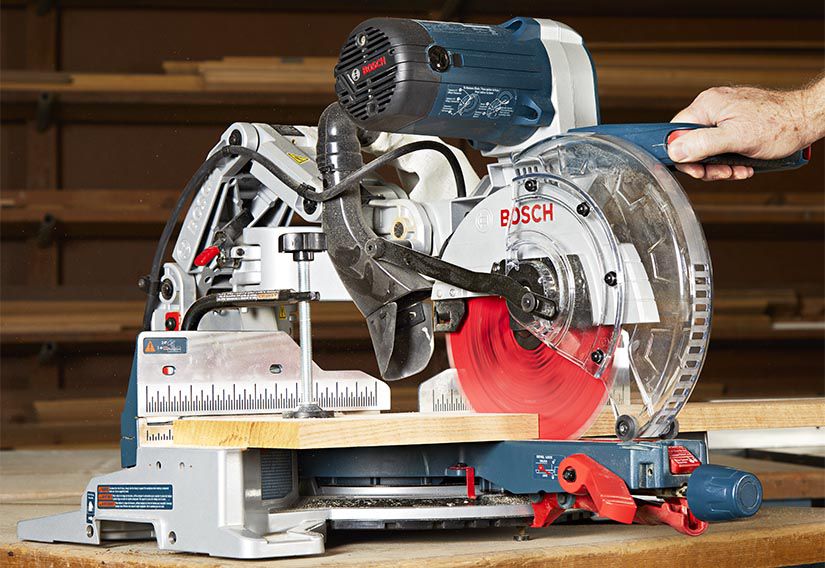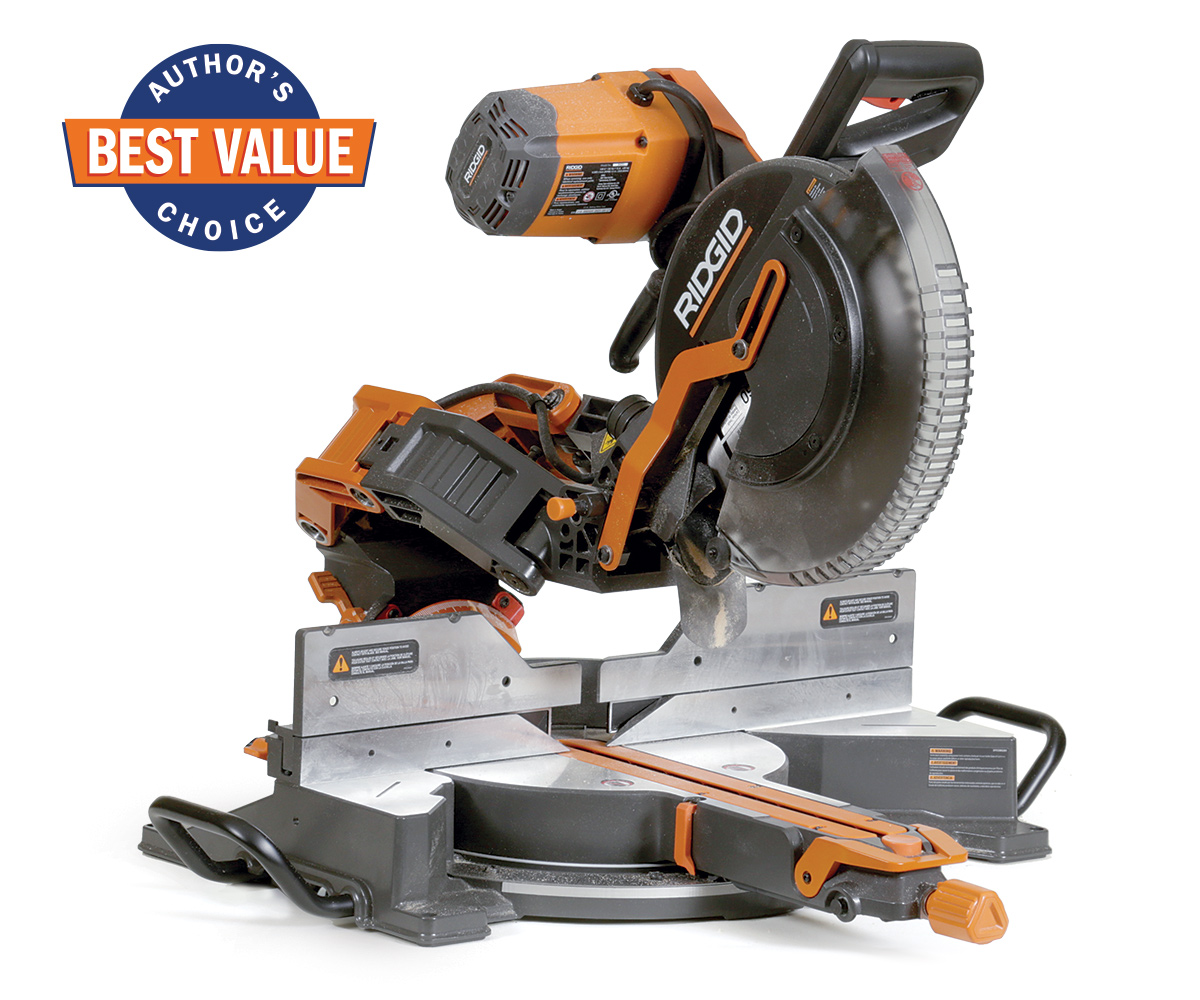Are sliding miter saws less accurate? You might be wondering if these versatile power tools live up to their reputation. Well, let me tell you, my young friend, the answer is not as simple as you might think.
In woodworking, precision is key, and getting accurate cuts is essential for a successful project. Sliding miter saws, with their ability to slide the blade back and forth, offer increased cutting capacity, allowing you to tackle larger pieces of wood. But does this versatility come at the expense of accuracy?
Let’s dive deeper into this question to shed some light on the accuracy of sliding miter saws and uncover the truth behind their reputation.

Are Sliding Miter Saws Less Accurate?
In the world of woodworking, precision and accuracy are paramount. When it comes to making intricate cuts, a sliding miter saw is a popular tool choice for many professionals and hobbyists alike. However, there has been a longstanding debate about whether sliding miter saws are less accurate compared to their non-sliding counterparts. In this article, we will explore this topic in detail, examining the factors that contribute to accuracy and determining whether sliding miter saws truly fall short in this regard.
Understanding Sliding Miter Saws
Before we delve into the accuracy aspect, let’s start by understanding what a sliding miter saw actually is. A sliding miter saw is a power tool that combines the functionality of a miter saw with the added feature of a sliding arm. This arm allows the saw blade to move forward and backward, increasing the cutting capacity and enabling users to make wider crosscuts. The sliding mechanism adds versatility to the saw, making it suitable for cutting larger stock. However, this additional functionality does raise questions about its impact on accuracy.
When considering the accuracy of sliding miter saws, it’s important to note that the sliding mechanism introduces potential sources of error. The sliding arm can introduce play or movement that may affect the precision of the cuts. Additionally, the longer arm length can result in increased flex, leading to deviations in the angle and squareness of the cuts. However, it is essential to remember that advancements in technology and design have significantly mitigated these concerns in modern sliding miter saws. Manufacturers now employ various features and mechanisms to minimize play, ensure stability, and maintain accuracy.
The Benefits of Sliding Miter Saws
Despite the possible concerns regarding accuracy, sliding miter saws offer several advantages that make them a preferred choice for many woodworkers. The sliding arm allows for cutting wider pieces of material, which can be especially beneficial when working on larger projects. This versatility enhances the overall functionality of the tool, making it more versatile than non-sliding miter saws. Additionally, sliding miter saws often come with a laser guide system or digital displays, which can aid in achieving precise and accurate cuts.
Moreover, the sliding feature of these saws allows for efficient and smooth cutting motion. This streamlined process enables woodworkers to work quickly and effectively, ultimately saving time and effort. The ability to make bevel and compound cuts using sliding miter saws adds another layer of versatility to the tool, expanding its usefulness when working on various projects. These benefits highlight that while accuracy might be a point of consideration, the versatility and functionality of sliding miter saws make them a preferred choice for many craftsmen.
Tips for Ensuring Accuracy with Sliding Miter Saws
While sliding miter saws can indeed be accurate, there are certain steps and precautions that woodworkers can take to ensure the best possible results. Here are some tips:
- Invest in a high-quality sliding miter saw: Choosing a reputable brand known for its accuracy and precision can greatly enhance the performance of the tool.
- Calibrate and adjust the saw: Regularly checking and adjusting the settings of the saw, such as the fence, bevel angle, and miter gauge, can help maintain accuracy.
- Use a reliable and sturdy workbench: Having a stable work surface can minimize vibrations and ensure better accuracy during cuts.
- Make test cuts: Before working on the final piece, it’s always a good idea to make test cuts on scrap material to check for accuracy and make any necessary adjustments.
- Utilize clamps and jigs: Using clamps and jigs can help secure the workpiece, preventing any movement or slippage during the cutting process.
- Maintain a clean and sharp blade: Regularly cleaning the blade and ensuring it is sharp can significantly improve the quality and accuracy of the cuts.
- Practice and develop skills: Like any other woodworking tool, practice is key. The more experience and familiarity a woodworker has with a sliding miter saw, the better they will be able to achieve accurate cuts.
Conclusion
While the accuracy of sliding miter saws has been a topic of discussion, it is important to recognize that advancements in technology and design have greatly improved their precision. With the right techniques, adjustments, and practice, woodworkers can achieve accurate cuts with sliding miter saws. The added benefits of versatility, increased cutting capacity, and efficient cutting motion make sliding miter saws a valuable tool option for many woodworking projects. Remember to invest in a high-quality saw, regularly calibrate and maintain the tool, and utilize best practices to ensure accurate and precise cuts.
Key Takeaways: Are Sliding Miter Saws Less Accurate?
– Sliding miter saws tend to be less accurate than non-sliding ones due to their design.
– The sliding mechanism introduces additional play, leading to potential measurement errors.
– However, with proper setup and calibration, sliding miter saws can still deliver accurate cuts.
– High-quality sliding miter saws with advanced features offer improved accuracy.
– It’s important to consider the type of cuts you’ll be making before deciding on a miter saw.
Frequently Asked Questions
Sliding miter saws are a popular tool for woodworking and carpentry projects. They offer the ability to make angled cuts and crosscuts with ease. However, there might be some concerns about their accuracy. Here are some commonly asked questions about the accuracy of sliding miter saws.
1. How accurate are sliding miter saws compared to other types of saws?
Sliding miter saws, like any other saw, can vary in accuracy depending on the quality of the tool and how well it is set up and calibrated. Generally, sliding miter saws are designed to provide precise and accurate cuts, thanks to their sliding mechanism and adjustable angles. They are often more accurate than basic miter saws or circular saws when it comes to making angled cuts and bevels.
However, it is essential to remember that even the most accurate sliding miter saws require proper setup and adjustment. Regular maintenance, such as checking and calibrating the blade and fences, is crucial to maintain accuracy. Additionally, using high-quality blades suited for your specific cutting needs can further enhance the accuracy of your cuts.
2. Can the sliding mechanism affect the accuracy of cuts?
The sliding mechanism of a miter saw enables it to cut wider boards by sliding the saw head back and forth. While the sliding feature does add versatility, it can potentially impact accuracy if not properly utilized. The key to maintaining accuracy with a sliding miter saw is to ensure that the sliding mechanism is sturdy and well-aligned.
If the sliding mechanism has excessive play or is misaligned, it can introduce inaccuracies in the cuts. Regularly inspect the sliding mechanism for any signs of wear or misalignment and address them promptly. Proper maintenance and adjustments can help minimize any potential loss of accuracy caused by the sliding mechanism of a miter saw.
3. Are sliding miter saws less accurate than non-sliding miter saws?
No, sliding miter saws are not inherently less accurate than non-sliding miter saws. Both types can deliver precise cuts when set up correctly. The accuracy of a miter saw is primarily determined by the quality of the tool, proper alignment of the blade, and accurate measurement and marking techniques.
Sliding miter saws offer additional versatility with their sliding feature, allowing for wider crosscuts. However, it’s important to keep in mind that the sliding mechanism can introduce slight variations if not maintained and adjusted properly. With regular maintenance and attention to alignment, sliding miter saws can be just as accurate as non-sliding ones.
4. Can the length of the slide affect the accuracy of a sliding miter saw?
The length of the slide on a sliding miter saw does not directly impact its accuracy. The length of the slide primarily determines the maximum width of the workpiece that the saw can cut. A longer slide allows for cutting wider boards, but it doesn’t affect the precision or accuracy of the cuts.
The accuracy of a sliding miter saw depends on factors such as the quality of the tool, the alignment of the blade and fences, and the user’s cutting technique. Regardless of the length of the slide, a properly calibrated sliding miter saw can deliver accurate cuts with consistent precision.
5. How can I improve the accuracy of my sliding miter saw?
To improve the accuracy of your sliding miter saw, there are several steps you can take. First, ensure that the saw is properly calibrated and aligned. Check the blade angle settings and verify that the fences are square to the blade.
Using a high-quality blade specifically designed for the type of cuts you are making can also enhance accuracy. Make sure the blade is sharp and suitable for the material you are cutting. Additionally, take your time to measure and mark your workpieces accurately before making the cuts.
Regular maintenance, such as cleaning the saw, lubricating the moving parts, and checking for any signs of wear, is essential for optimal accuracy. Lastly, practice and refine your cutting techniques to ensure smooth and controlled movements when operating the sliding miter saw.

Summary
Sliding miter saws may be less accurate due to their design and moving parts.
They might have more play in their movements, which can result in less precise cuts.
However, with proper adjustments and techniques, you can still achieve accurate results with a sliding miter saw. Just take your time and use the appropriate tools and accessories.
